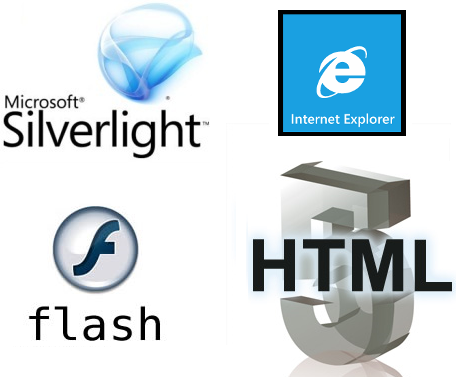IE on WP7: HTML5, Silverlight, and Flash (Oh My!)

As we get closer to the launch of Windows Phone 7, it’s inevitable that we are going to start learning more about Windows Phones and the Operating System behind them. Hardware details are becoming more plentiful, information about what we can expect from apps and the Marketplace are getting tossed around, and even carrier availability is becoming less of a mystery.
One area that I’m actually surprised that it hasn’t received more time under the microscope is Internet Explorer. There has been some traffic among the developer community as of late around the fact that Microsoft has neglected support for HTML5 in Windows Phone 7, but how much of a problem is this to Microsoft and to Windows Phone 7 in particular? Read on for my opinion.
Background
HTML5 (HyperText Markup Language version 5), for those of you that aren’t developers, is being billed as the future of the web. The World Wide Web Consortium (W3C) is the governing body for web standards. In a nutshell, the big push for HTML5 is that you won’t need browser plugins such as Adobe Flash or Microsoft Silverlight to do things like playing streaming video through the browser or building highly interactive websites. The HTML5 standard supports these things and much more from the get-go.
The downside to HTML5 at this point is that the standard isn’t finalized. That hasn’t stopped companies like Apple and Google from implementing support for the standard as-is within their browsers and mobile devices. It goes without saying that these are two of Microsoft’s biggest competitors in a number of different markets, which is why the exclusion of HTML5 support in WP7 is worth mentioning in the firstplace.

Why this could be a problem
When Apple’s iPad (without a doubt the biggest device launch so far this year) was released, one of the big complaints about the device was the lack of Flash support. The big reason for this complaint is the proliferation of Flash on sites across the Internet. Sites like YouTube and Hulu use Flash to stream video to computers and have become some of the most popular sites on the Internet. NetFlix uses Silverlight to accomplish essentially the same thing. Apple CEO Steve Jobs touted Safari’s HTML5 support as the alternative. Because of the popularity of iOS devices (and also Android’s support for HTML5), YouTube and others have created HTML5 versions of their site specifically for this niche. The fact that Internet Explorer on Windows Phone supports exactly zero of the three solutions is certainly cause for some alarm.

Why this won’t be a problem
First of all, Microsoft has already said that Flash and Silverlight support are coming. Have you heard that from Steve Jobs lately? Second, the need for Flash/Silverlight/HTML5 support is not as great for mobile devices that use apps to integrate with services. Specifically, using a YouTube or Netflix application on Windows Phone 7 is more preferable than navigating the site for a couple of reasons; the UI is tailored more to a mobile device and the performance is going to be better because it’s optimized for the hardware.
From a long-term perspective, we know Microsoft is making HTML5 a top priority. Microsoft recognizes that the future is in HTML5, and they are making adjustments accordingly. Microsoft CEO Steve Ballmer has said that HTML5 is going to be the company’s focus going forward for web-based applications. This sentiment has been echoed this week at Microsoft’s Professional Developer Conference (PDC) by Microsoft’s Ray Muglia (President in charge of Server and Tools), “HTML is the only true cross platform solution for everything”.
Get the Windows Central Newsletter
All the latest news, reviews, and guides for Windows and Xbox diehards.
Obviously, we’re going to have to put some trust in Microsoft being proactive in updating Internet Explorer for Windows Phone. The good news is that the browser can be updated independently from the rest of the OS. This should bode well for the timeliness of updates, and should make the Internet Explorer browser competitive with others on the market in a reasonable amount of time.
So what does this mean for Silverlight? Ballmer and Muglia both point to the fact that Silverlight is still a healthy platform for development, most notably for Windows Phone. The focus for Silverlight is shifting from being a web based platform to more specific uses such as Windows Phone; from a HTML5 competitor to something more in line with a language like Java. It’s hard to say how this will impact Windows Phone, but with the narrowed focus to the phone hardware and OS, it could be a very good thing.
Conclusion
This is what technology is all about. Keeping up with the moving target that is tech is a constant struggle, but it’s one that isn’t new to Microsoft. Compared to Windows Mobile, Windows Phone 7 is a massive leap towards where Microsoft wants to be. Sure, it’s not a perfect platform, and it doesn’t do everything that I want my phone to handle; but neither do the iPhone or Android devices on the market. Is it a great first step? For sure.
